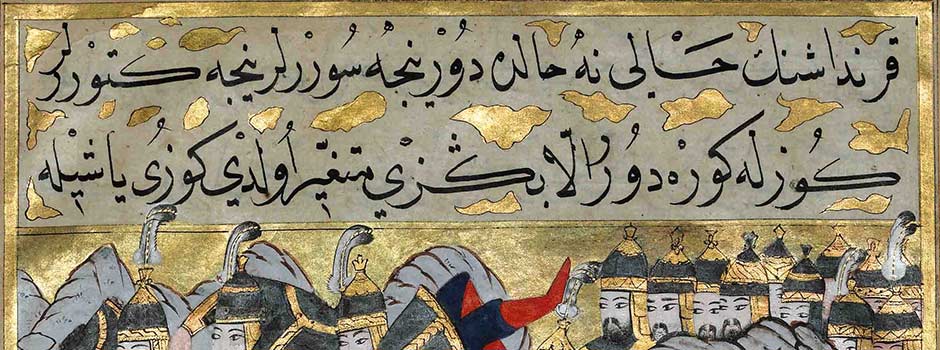
Auction at at Sotheby’s London, 9 October 2013 1,400 years of the Artistic Traditions of the Muslim World
Oct 07, 2013 Art Auction

A total of 281 exceptional objects including works relating to Tipu Sultan, property from the collection of Xavier Guerrand-Hermès, and rare paintings, ceramics, metalwork, and weapons, will be presented for sale - providing fascinating insights into Muslim history and culture, encompassing almost 1,400 years of every kind of decorative art produced in lands under Islamic patronage from Spain to India.
Benedict Carter, Director, Head of Auction Sales Middle East, said: "This season’s auctions will include works of museum quality, rarity and beauty spanning nearly 1,400 years, some of which are among only a handful left in existence. With this diversity we have already attracted a great deal of international interest. Sotheby’s will also be introducing its first-ever sale of ‘Art of Imperial India’ this autumn, following the success of previous sales of Indian Art including the record sales of Stuart Cary Welch’s collection in April and May 2011"
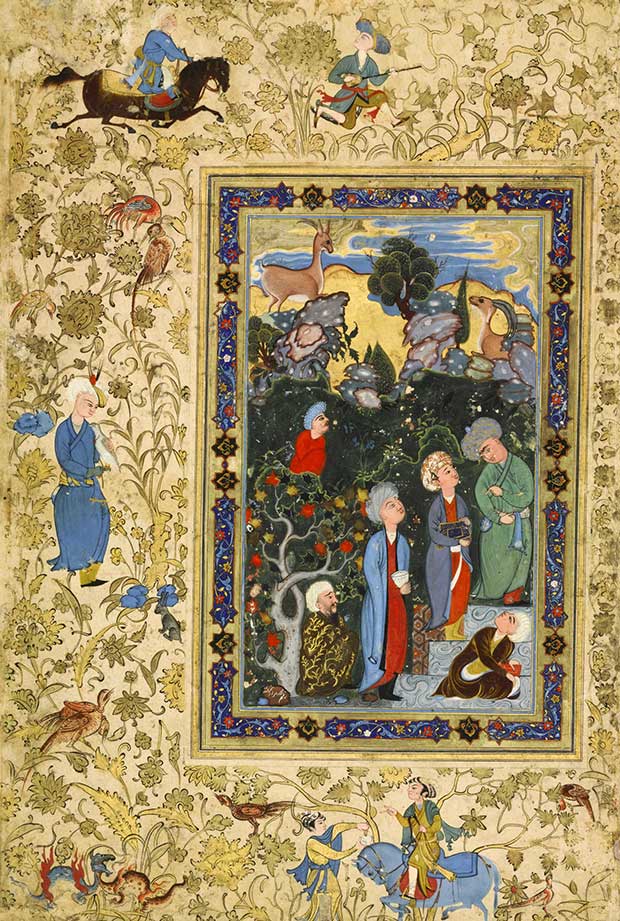 Four Young Scholars in Discussion, signed by Muhammad Murad Samarqandi, Persia, Safavid, Bukhara, early 17th century. Painting size: 19.3x11.4 cm, leaf size: 37.5x26 cm / Courtesy of Sotheby's
Four Young Scholars in Discussion, signed by Muhammad Murad Samarqandi, Persia, Safavid, Bukhara, early 17th century. Painting size: 19.3x11.4 cm, leaf size: 37.5x26 cm / Courtesy of Sotheby's
This illustrated leaf represents one of only a handful of works attributable to the remarkable and enigmatic artist, Muhammad Murad Samarqandi. While other examples of his work are held in the collections of the Louvre, Paris, and the Freer Gallery of Art in Washington, this is the only recorded album page by Samarqandi in which the artist is responsible for both the border and the main image. It is arguably the most impressive and complete example of his known works.
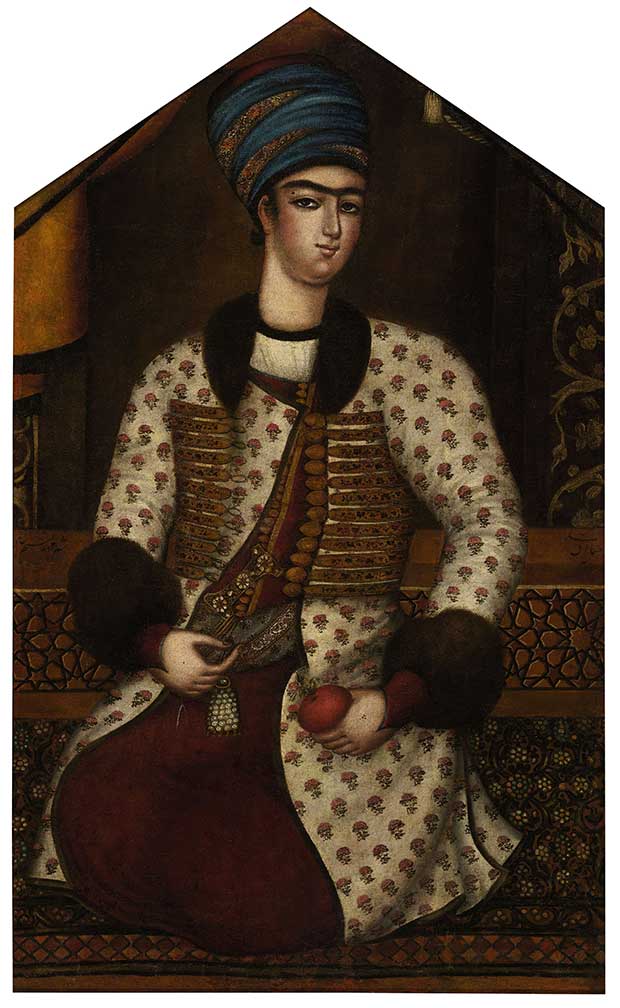 A Portrait of Rustam Khan Zand, signed by Muhammad Sadiq, Persia, Zand, Shiraz, circa 1779. Oil on canvas, framed: 148x89 cm / Courtesy of Sotheby's
A Portrait of Rustam Khan Zand, signed by Muhammad Sadiq, Persia, Zand, Shiraz, circa 1779. Oil on canvas, framed: 148x89 cm / Courtesy of Sotheby's
This unusual and rare portrait of Rustam Khan Zand, of the Zand dynasty, is an exemplary portrayal of the classic Persian ideal of youthful masculine beauty. The painting effectively displays the artist Muhammad Sadiq’s revolutionary style, to which his students strictly adhered, and which influenced the extensive canon of royal Qajar portraiture. Rustam Khan Zand was the grandson of Karim Khan Zand’s half-brother Zaki, who ruled Iran for a year in 1779.
 The Fall of Constantinople, Italy, probably Venice, late 15/early 16th century. Oil on canvas, framed: 95.2x138.7 cm / Courtesy of Sotheby's
The Fall of Constantinople, Italy, probably Venice, late 15/early 16th century. Oil on canvas, framed: 95.2x138.7 cm / Courtesy of Sotheby's
This is an extremely rare and important late fifteenth or early sixteenth century Italian oil painting of the ancient city of Constantinople. It is probably the earliest known depiction of the pivotal moment in the history of the Ottoman Empire and Christian Europe when the city was captured by the Ottoman army of the 21 year old Sultan Mehmet, the Conqueror. The composition also includes all the major monuments of the Byzantine city, most importantly the Hagia Sophia Church and the Hippodrome in the centre, with the Aqueduct of Valens in the background.
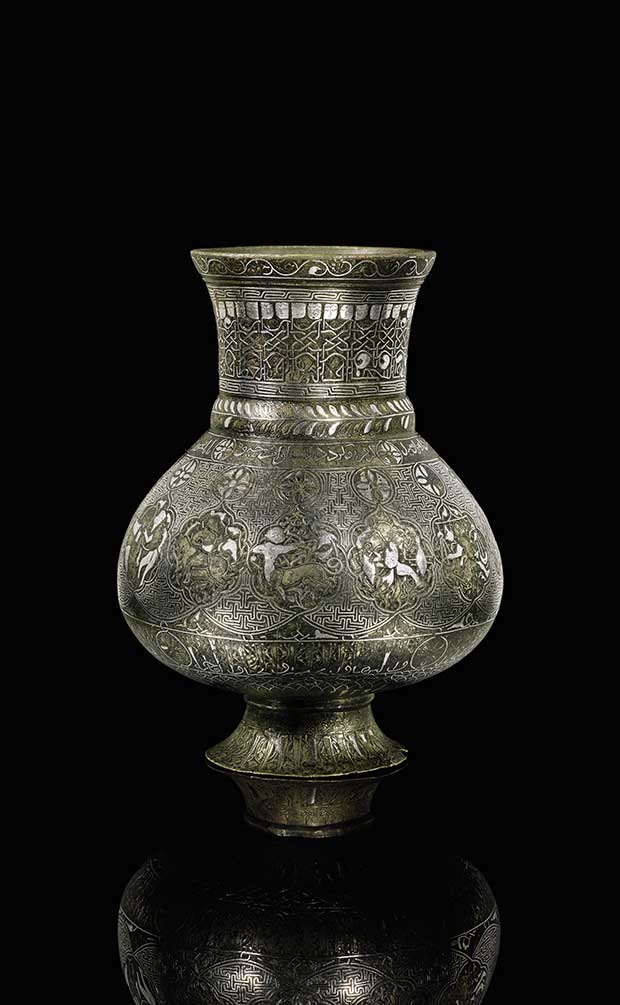 A silver-inlaid brass jug, Mesopotamia, Mosul, firts half of 13th century, 16.5cm height / Courtesy of Sotheby's
A silver-inlaid brass jug, Mesopotamia, Mosul, firts half of 13th century, 16.5cm height / Courtesy of Sotheby's
Leading the works of art featured in the sale is an important early 13th century brass silver-inlaid Mosul jug, estimated at £300,000-400,000.
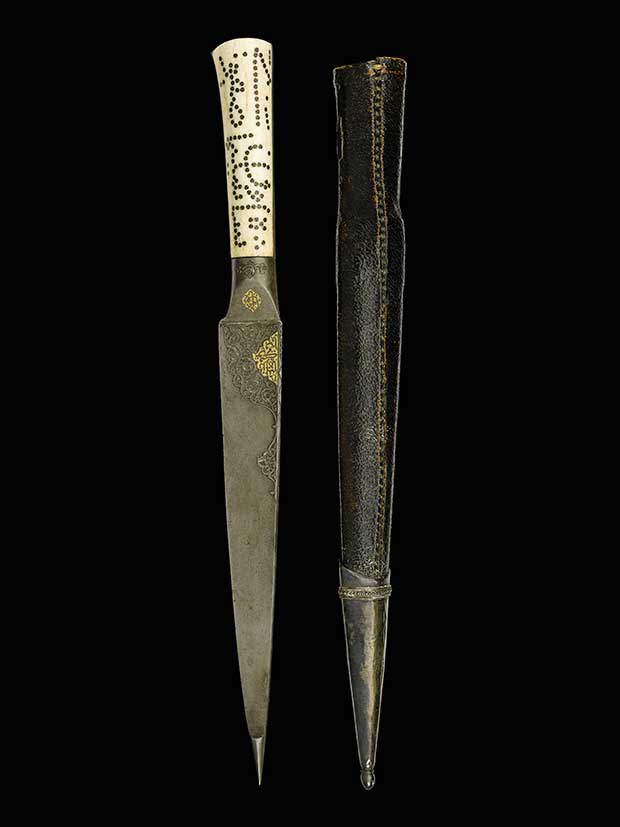 A fine Safavid watered-steel dagger (kard) with walrus ivory hilt dedicated to Shah Suleyman Safavi (Suleyman III), (r.1666-94), Persia, 17th century, 40 cm / Courtesy of Sotheby's
A fine Safavid watered-steel dagger (kard) with walrus ivory hilt dedicated to Shah Suleyman Safavi (Suleyman III), (r.1666-94), Persia, 17th century, 40 cm / Courtesy of Sotheby's
The sale will also open with 42 lots from the esteemed Collection of Xavier Guerrand-Hermès. The works, including rare ceramics, metal ware and miniatures will be sold to benefit the Guerrand-Hermès Foundation for Peace. Established in 1996 with an aim to effect change in the world, the foundation conducts research in order to change perceptions, promotes inter-religious dialogue for peace and seeks innovative solutions to problems of poverty and injustice.
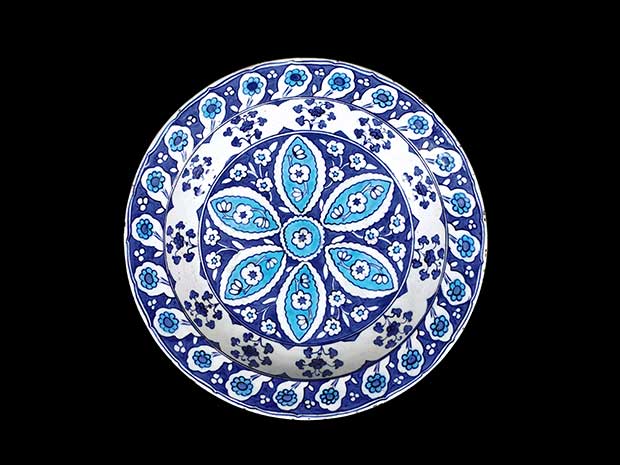 Property from the Guerrand-Hermes Collection / A rare blue and white Iznik dish, Turkey,circa 1535-40 / Courtesy of Sotheby's
Property from the Guerrand-Hermes Collection / A rare blue and white Iznik dish, Turkey,circa 1535-40 / Courtesy of Sotheby's
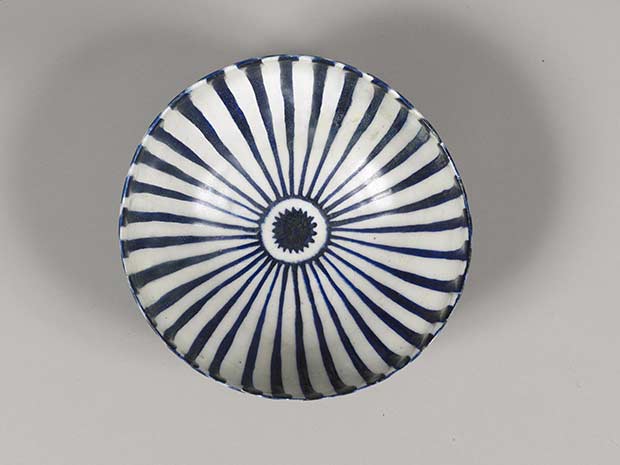 Property from the Guerrand-Hermes Collection / A Kashan blue and white footed bowl, Persia, 13th century, 20 cm diam., 19.5 cm height / Courtesy of Sotheby's
Property from the Guerrand-Hermes Collection / A Kashan blue and white footed bowl, Persia, 13th century, 20 cm diam., 19.5 cm height / Courtesy of Sotheby's
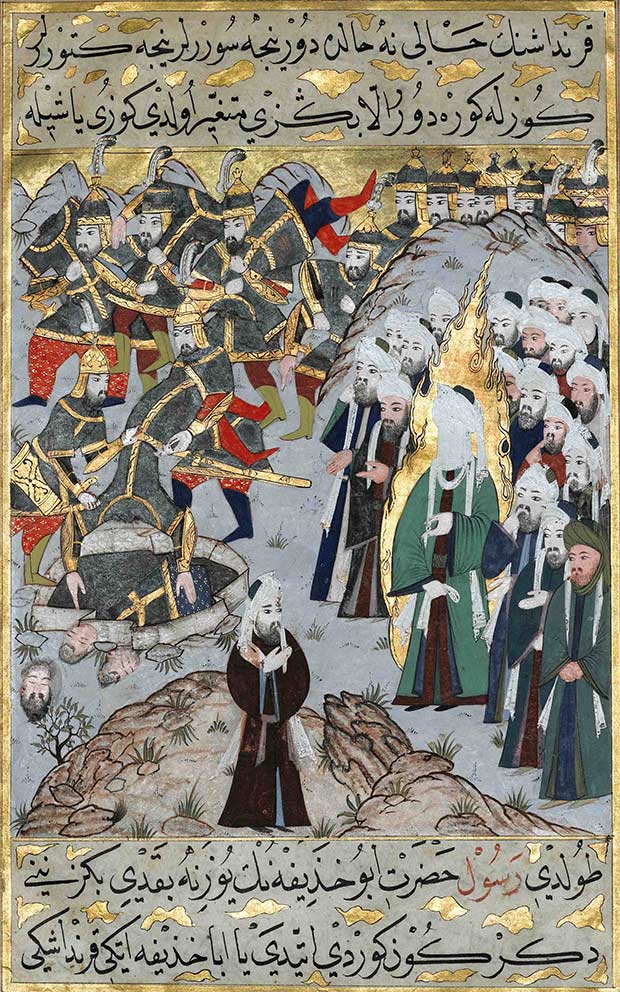 Property from the Guerrand-Hermes Collection / An illustrated and illuminated leaf from The Siyar-I-Nabi of Mustafa Dharir, copied by Mustafa Bin Vali, Turkey, 1594-95. Painting size: 20x17 cm, leaf size: 36.5x 26 cm / Courtesy of Sotheby's
Property from the Guerrand-Hermes Collection / An illustrated and illuminated leaf from The Siyar-I-Nabi of Mustafa Dharir, copied by Mustafa Bin Vali, Turkey, 1594-95. Painting size: 20x17 cm, leaf size: 36.5x 26 cm / Courtesy of Sotheby's
The Arts of Imperial India auction will comprise 11 works relating to Tipu Sultan (1750–1799), including weaponry, prints, watercolours and portraits. Highlights include a Tipu Sultan sword fitted with a captured English blade, taken as booty during the storming of the fortress of Seringapatam by the British in May 1799. Decorated with Tipu’s personal emblem, the ‘bubri’, or tiger-stripe motif, it is estimated at est. £80,000-120,000. A further highlight is an 11-bore silver-mounted flintlock duck gun from the personal armoury of Tipu Sultan, signed Sayyid Ma’sum, Patam, dated Mawludi year 1218 (1789-90), est. £80,000-100,000.
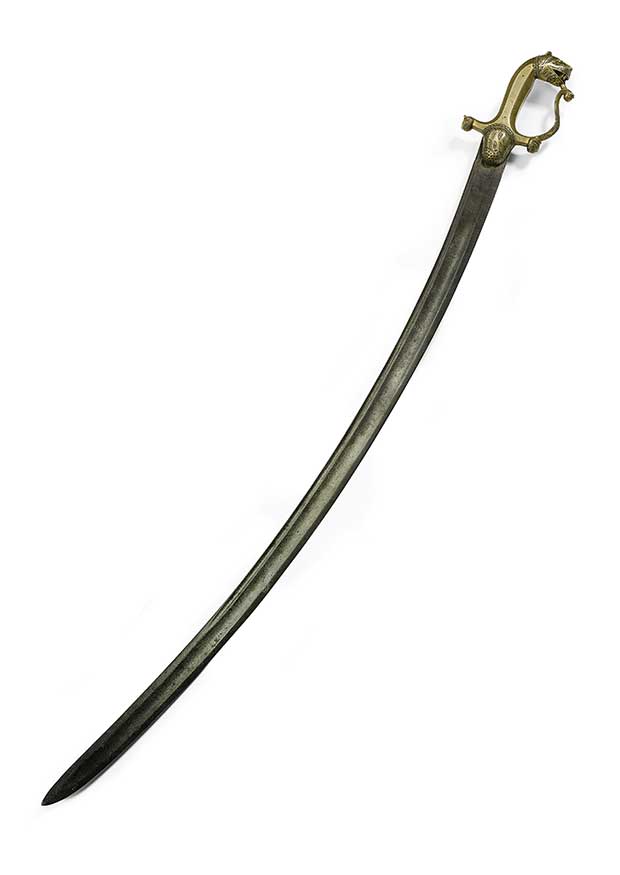 A Tipu Sultan sword fitted with a captured English blade, Mysore, late 18th century, 103.2 cm length / Courtesy of Sotheby's
A Tipu Sultan sword fitted with a captured English blade, Mysore, late 18th century, 103.2 cm length / Courtesy of Sotheby's
 A rare diamond-set enamelled and bejewelled gold pandan box, North India, 18th century / Courtesy of Sotheby's
A rare diamond-set enamelled and bejewelled gold pandan box, North India, 18th century / Courtesy of Sotheby's
This extremely rare enamelled and bejewelled gold pandan box, set on a tray with eight smaller boxes, displays the wealth and taste at the Mughal court for the most lavish objects. These were used not only for personal ornamentation, but served an important diplomatic purpose, to impress and reinforce the power of their Empire. Covered with bright green enamel and set throughout with diamonds in the kundan technique, the creator of the present box and tray has conceived a masterful combination of the highest order. The diamonds are carefully faceted to bring out the maximum brilliance of each stone. Whereas jewelled examples of this quality exist, it is incredibly rare to find this shape.
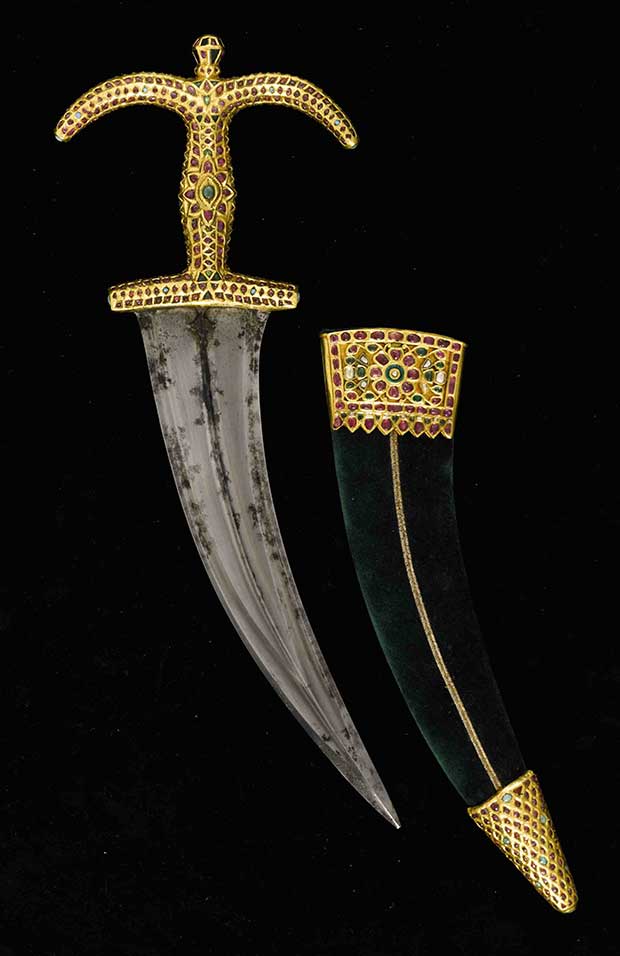 A gem-set gold dagger and scabbard, Mughal, circa 1700. Dagger: 34 cm / Courtesy of Sotheby's
A gem-set gold dagger and scabbard, Mughal, circa 1700. Dagger: 34 cm / Courtesy of Sotheby's
Swords and daggers formed an important part of the Royal Mughal treasuries; they were considered as precious as the finest jewels, and the craftsmen who fashioned them were regarded with the same esteem as the greatest artists. This dagger, overlaid with gold and set with rubies, emeralds and turquoise, embodies the prestige accorded to such weapons and the message of power that they conveyed as presentation pieces.
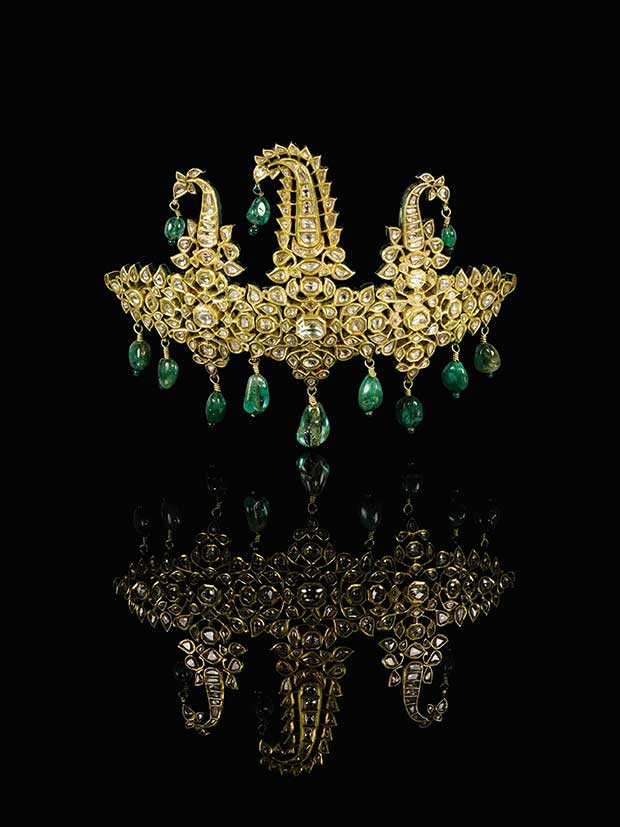 A gold and enamelled diamond-set sarpech Benares, circa 1850 / Courtesy of Sotheby's
A gold and enamelled diamond-set sarpech Benares, circa 1850 / Courtesy of Sotheby's
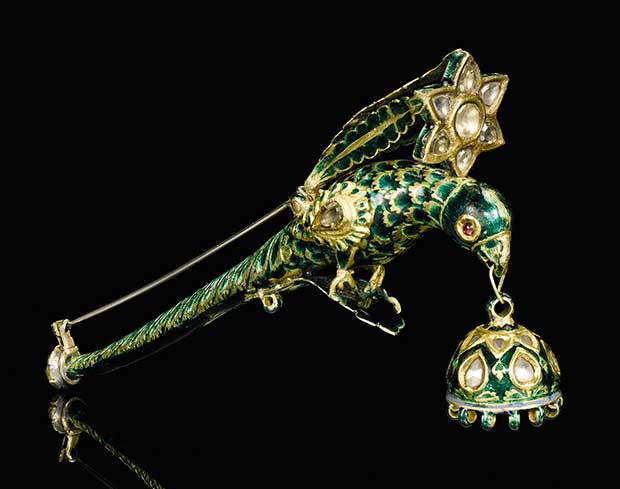 An enamelled gold turban ornament in the form of a parrot (turra), North India, 19th Century / Courtesy of Sotheby's
An enamelled gold turban ornament in the form of a parrot (turra), North India, 19th Century / Courtesy of Sotheby's
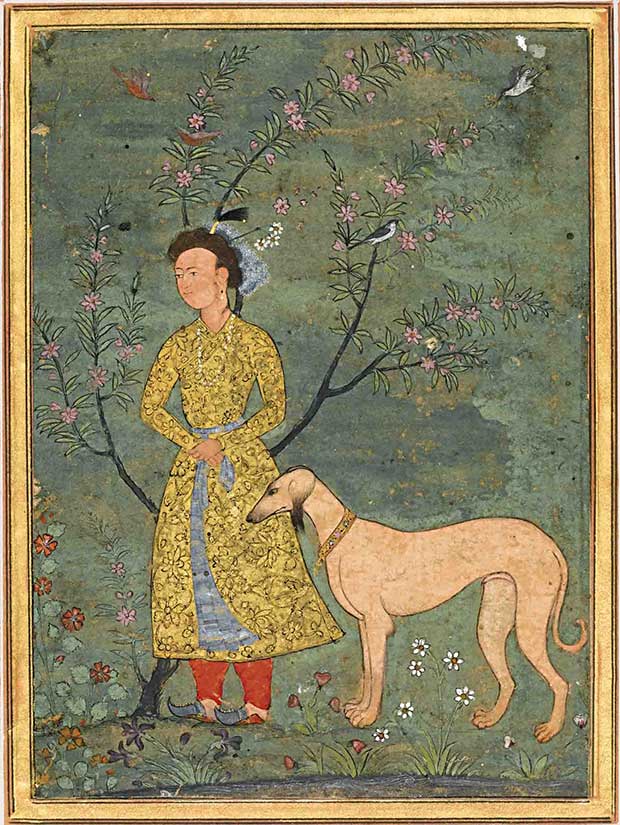 A portrait of a nobleman with a dog, attributable to a follower of Farrukh Beg, possibly Muhammad Ali, Mughal, early 17th century / Courtesy of Sotheby's
A portrait of a nobleman with a dog, attributable to a follower of Farrukh Beg, possibly Muhammad Ali, Mughal, early 17th century / Courtesy of Sotheby's
This is an important and rare painting close in style to the work of the well-known Perso-Mughal-Deccani artist Farrukh Beg, and is possibly by the artist Muhammad Ali, a close follower of Farrukh Beg who was active at the Mughal court in the early years of the seventeenth century. The composition of a princely youth standing or seated in front of blossoming trees was a popular one in Persian and Mughal painting of this period.
For more information and to see full online catalog please visit Sotheby's.
Listen to Sotheby’s specialist Benedict Carter share intriguing insights on some of the exceptional highlights HERE.
Comments
Add a comment